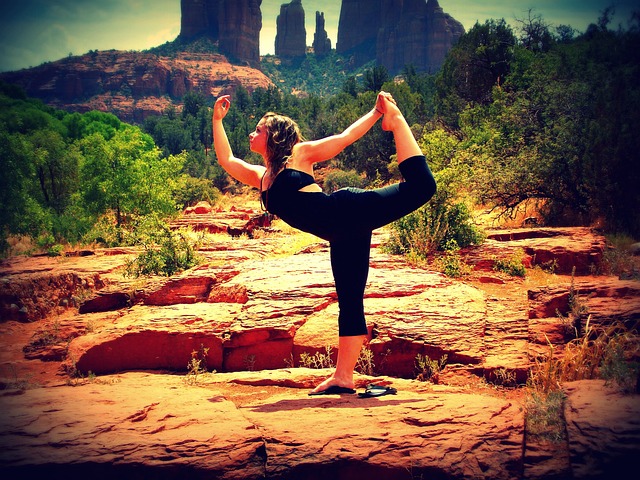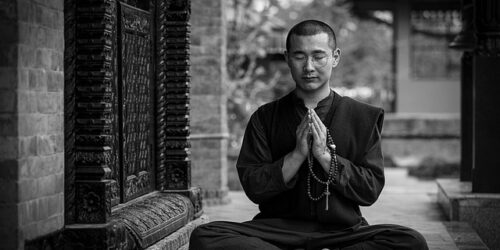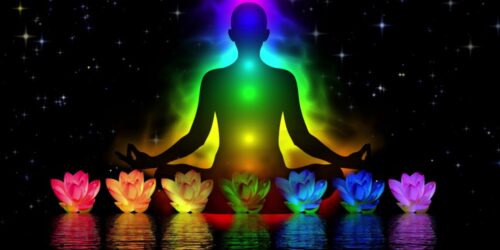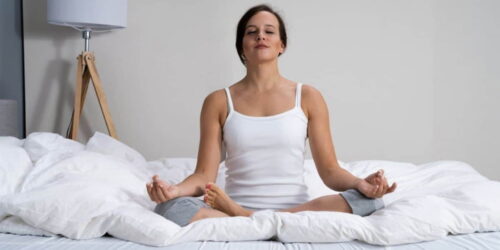Is Yoga a Form of Meditation? Everything You Want to Know
Both yes and no can be used to answer this query. Yes, yoga can help with meditation, but it also has a lot more benefits than that. The way you go about it really makes a difference.
Yoga can be a form of meditation if you see it as merely a way to connect with your inner self and quiet your mind. The secret is to relax and concentrate on your breathing. It will all fall into place once you find your center.
But yoga can also be a very vigorous form of exercise. It is most definitely not meditation if your goal is to work up a sweat and raise your heart rate while doing it! Instead of clearing your mind in this situation, you would be concentrating on your physical movement and breathing.
So, in the end, it’s up to you to decide whether yoga is a type of meditation or not. It has the potential to be a very effective tool for stilling the mind and achieving inner peace if you approach it with the right attitude. However, you might want to look elsewhere if you’re looking for a more vigorous form of exercise.
Table of Contents
What is Yoga?
Yoga is a Sanskrit word translated as “yoke” or “union.” A yoke is a binding or unifying force that draws people together. Its goal is to unite or yoke the body, mind, soul, and universal consciousness. Deep states of freedom, peace, and self-realization are only possible for yogis through the process of uniting the physical, mental, emotional, and spiritual aspects of ourselves.
Yoga is an ancient system of physical, mental and spiritual practices that have been passed down through the generations from teacher to student. Pranayama, postures, relaxation, chanting, and other forms of meditation are all part of yogic practices. Yoga comes in a wide variety of forms, each with a particular goal and method for achieving unification.
Its roots can be found in the Upanishads, a body of yogic literature that dates from roughly 800 BC to 400 AD. While the word “yoga” was first mentioned in the Rigveda, but the Katha Upanishad is where it first appears with its contemporary connotation. Between the 5th and the 3rd centuries BCE, this ancient spiritual text was written.
Around 200 BCE, Patanjali penned The Yoga Sutras, one of the most well-known books on the foundations of yoga. In this foundational text, he defines yoga in sutra 1.2 as: yogash chitta-vritti-nirodhah. This translates as “Yoga is the cessation of the mind’s spinning fluctuations.”
The result of a committed and regular yoga practice is this cessation of thought. This contemplative technique quiets our mind chatter and connects us to the source of our being, where we can experience the unity of our own selves and the unity of everything else around us.
What is Meditation?
By turning inward and developing a single point of focus, you can transform your mind through the practice of meditation. You can simply concentrate on your breath, developing a love-filled state of being, or expressing gratitude. People engage in meditation for a variety of reasons, including improved clarity and focus, the development of overall body and mental calmness, or spiritual aspirations.
- How does meditation appear?Typically, during meditation, a still body is either sitting on a cushion or chair or lying down. Your mind begins to calm down as your body begins to become more present. Your eyes may be closed or slightly open. While meditating, keep your spine straight and your body at ease.
- How do individuals meditate? Guided meditations or group meditation classesare popular and can easily be found online or in studios. Alternatively, you can practice alone at home by slowing down your thoughts and concentrating on a single thing. Some meditations concentrate on the breath, mantras, your inner guide, love, or even the mindfulness technique.
The Difference Between Yoga and Meditation
Stretching, breathing, and poses are all part of yoga as a form of exercise. It is possible to train the mind to concentrate and become aware of the present moment through the practice of meditation.
Although yoga is one type of meditation, it is not the only one. Yoga can be practiced without meditation, and vice versa. However, the two methods are frequently combined.
Body, mind, and spirit all benefit from yoga. Flexibility, strength, and posture can all be helped. Yoga can also aid in reducing pain, stress, and anxiety.
The benefits of meditation extend to the mind. It may aid in enhancing mental clarity, focus, and concentration. Stress, anxiety, and discomfort can all be diminished with meditation.
People of all ages and skill levels can engage in yoga and meditation.

What Do Meditation and Yoga Have in Common?
Yoga and meditation have many similarities despite some differences. For the general well-being of the body and mind, both yoga and meditation are helpful. Let’s take a look at some of the main advantages that these two techniques can provide.
1) Yoga and meditation both have improved concentration as one of their shared advantages. We can maintain single-minded attention when we meditate. We are unable to sit still and only pay attention to our own thoughts. We can practice and hone the ability to focus our attention and thoughts on better, more beneficial things by concentrating on one thing at a time. The process is similar during yoga sessions, though it is more focused on the body than the mind.
2) Stress levels are decreased by yoga and meditation. Through meditation, we can refocus our thoughts and actions toward something positive after first understanding the root cause of our stress. Numerous other advantages of yoga include lowering blood pressure, boosting heart health, and enhancing general well-being.
3) You can improve your awareness and intention-setting through both yoga and meditation. When we meditate, we simply observe our thoughts and feelings without passing judgment or responding to them. Our ability to understand what is happening inside our minds and exert more control over mental processes increases as a result. In a similar vein, yoga calls for careful consideration of one’s movements, breathing techniques, and emotional states.
So it’s obvious that you can decompress and reduce stress by practicing yoga and meditation. What happens then if we combine the two techniques?
Yoga and meditation practiced together can improve your ability to sleep, relax, maintain mental stability, and have more empathy for others as well as for yourself. Yoga and meditation go hand in hand; you can practice yoga asanas while meditating or do yoga asanas while doing meditation. Let’s examine how this will function in your day-to-day life.
Why Meditation Can’t Be Replaced With Yoga?
As you can see, there are lots of excellent reasons why MindOwl would advise you to include mindful yoga in your daily meditation routine in addition to your regular meditation session.
Yoga asana exercises are frequently performed before the main meditation session. Sun salutations, cat-to-cow, and downward-facing dog are examples of energizing, enlivening poses that can help to enliven and stimulate your sympathetic nervous system. After your meditation session, practice some calming yoga poses like forward bends or corpse poses to activate your parasympathetic nervous system and cause your body to enter a state of physical relaxation and calm. This can assist you in working through your emotional and physical difficulties and tensions, thereby preparing your body for sitting meditation, where you will practice mindfulness, focus, awareness, and movement.
Try out a meditation app that also includes guided movement! Use restorative yoga flows (slow yoga routines that incorporate yin yoga poses) as a way to ease into your meditation practice. Yin yoga is a slow, soothing form of yoga that emphasizes holding poses, or asanas, for longer periods of time in order to increase awareness and focus.
So that your awareness, focus, and intention are all engaged during meditation, you will be able to use yoga as a formative tool for your meditation sessions. You’ll be able to maintain your attention in the here and now while ignoring the detrimental effects of thoughts and feelings in order to connect with your authentic inner self.
Frequently Asked Questions
Which is Better: Yoga Or Meditation?
Yoga and meditation are both good options if you want to lower your stress and anxiety. Yoga might be a better choice for you, though, if you enjoy movement and physical activity. Meditation might be a better option for you if you’re trying to understand and calm your mind. It just depends on your goals and preferences; neither is inherently superior to the other.
Are Meditation and Yoga the Same Thing?
A. No, meditation and yoga are not the same thing. While meditation is a practice that can be done with or without movement in order to focus and calm the mind, yoga is an activity that uses specific body positions to achieve benefits for both physical and mental health.
Is It Better to Do Yoga Or Meditation First?
According to your goals, it will vary. Preparing for meditation with yoga is helpful if you want to lower your stress levels by connecting with your mindful self. If you want to be in a relaxed state for your exercise, practice meditation first. Put your mind before your body.
The Difference Between Mindfulness and Meditation
It’s a good idea to define the difference betweenmeditation and mindfulnessis. Despite being very distinct from one another, the two are sometimes used interchangeably.
- What is Mindfulness?
Being mindful means purposefully absorbing all of the present moment’s experiences. When you are completely aware of what is going on in the moment and fully present in the “now”, you are practicing mindfulness.
- How do I carry out mindfulness practice? Being fully present in every moment is a key component of mindfulness. Your mind may occasionally become fixated on the past or the future, preventing you from being fully present in the present. Being fully present in the moment while avoiding attachment and judging it are key components of mindfulness.
- Where can I engage in mindfullness? Anywhere, at any time, you can engage in mindfullness. Consider whether you react immediately or pause instead the next time you are in a stressful situation. Recognize your reaction and pay attention to how your body is feeling. By taking a deep breath, bring your attention back to your body and the present moment.





